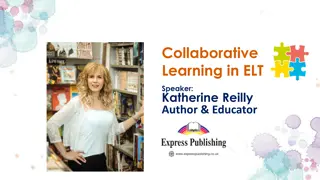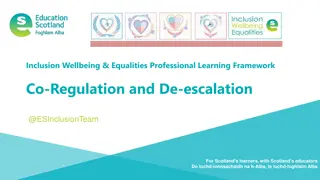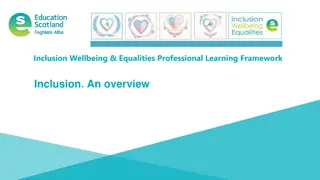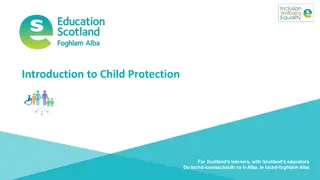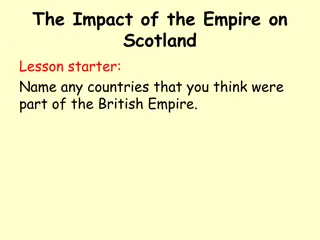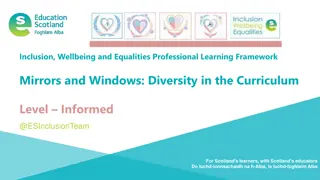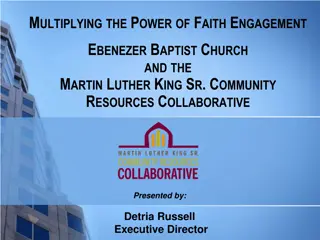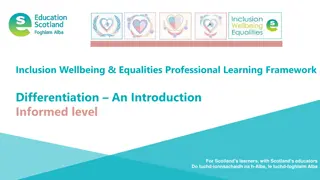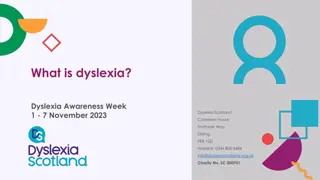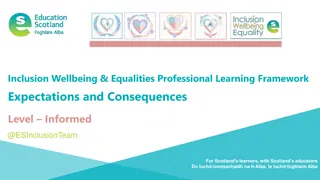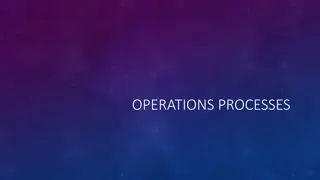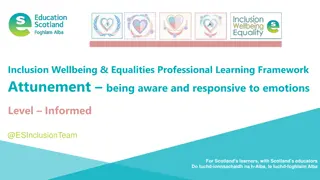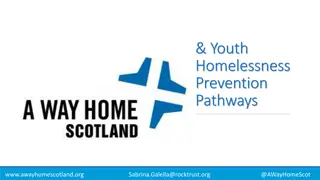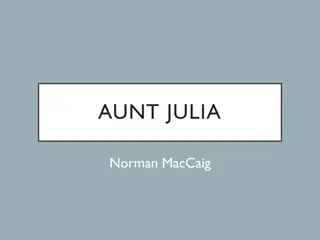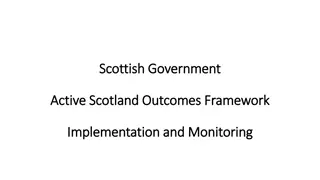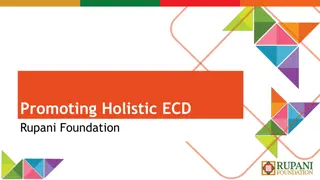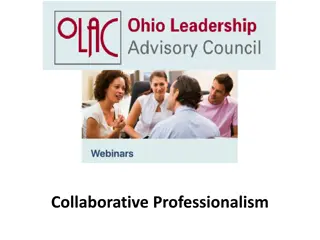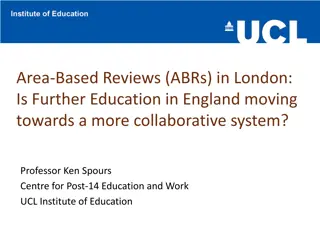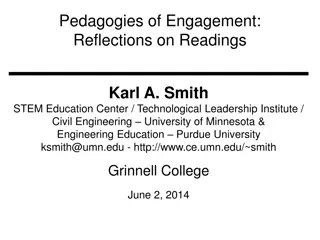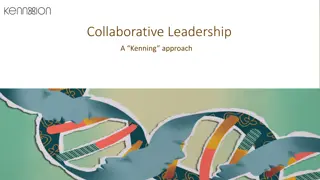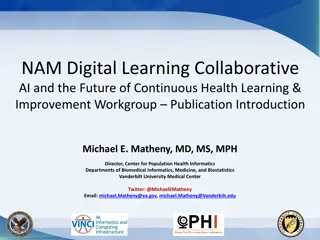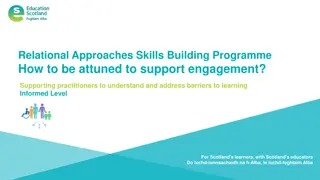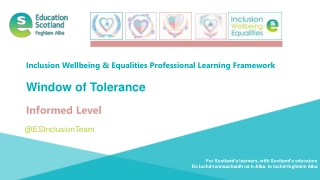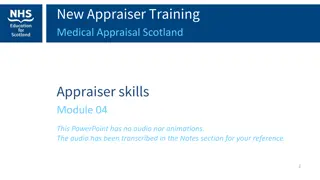Transforming Lives Through Collaborative Professional Learning in Scotland
The Curriculum Story Project 5 offers discussion and practical activities for Scotland's educators to enhance interdisciplinary learning and collaborative professional development. It emphasizes the importance of creating dedicated time and space for collaboration, exploring new strategies for educator collaboration, and supporting staff through changes in teaching practices. This initiative aims to transform lives through improved learning pathways and educator engagement.
Download Presentation

Please find below an Image/Link to download the presentation.
The content on the website is provided AS IS for your information and personal use only. It may not be sold, licensed, or shared on other websites without obtaining consent from the author. Download presentation by click this link. If you encounter any issues during the download, it is possible that the publisher has removed the file from their server.
E N D
Presentation Transcript
The Curriculum Story Project: 5. Collaborative Professional Learning Discussion Activities For Scotland's learners, with Scotland's educators Transforming lives through learning The Curriculum Story Project: 5. Collaborative Professional Learning
How to use this download pack The discussion and practical activities in this pack connect to the case studies and ideas around interdisciplinary learning of The Curriculum Story Project 5: Collaborative Professional Learning. While there is value in using them as standalone resources, we encourage teams to read the case studies, together, as part of their own reflective practice. From 2020-22, The Curriculum Story Project from Education Scotland brought together nearly 200 practitioners to understand the components, processes, and thinking behind successful interdisciplinary learning and the development of broader learner pathways. The case studies and activities are designed by NoTosh, a firm specialised in helping people think differently and choose the way they learn and work. Transforming lives through learning The Curriculum Story Project: 5. Collaborative Professional Learning
Discussion activities First read the case studies for The Curriculum Story Project Collaborative Professional Learning. Then use one of these discussion points for a learning session or team meeting. Discussion 1. How do you ringfence time and space for collaborative professional learning in your school or setting? For example, do you regularly manage to timetable opportunities for curriculum planning and dialogue during staff meetings? Discussion 2: What new strategies could you consider that facilitate more collaboration amongst educators? For example, how could you use ideas such as speed dating, book clubs, or the design of learning provocations for IDL to bring educators together? Discussion 3: How will you support staff who may struggle with the speed of change or the new demands that an emphasis on collaboration might require? For example, could you use the example of allowing educators to plan individually or across shared online documents before sharing and making choices as a group? For Scotland's learners, with Scotland's educators For Scotland's learners, with Scotland's educators The Curriculum Story Project: 5. Collaborative Professional Learning
The Curriculum Story Project: 5. Collaborative Professional Learning Practical Activities For Scotland's learners, with Scotland's educators Transforming lives through learning The Curriculum Story Project: 5. Collaborative Professional Learning
1. Parts, People, Interactions reflect on the existing system of collaborative learning in your setting Collaboration is a fundamental feature of IDL for educators, learners and partners. To be successful, it requires a dedicated space and time to meet, and a shared sense purpose and values. Curriculum-making guidance highlights the importance of educational settings knowing your own learning and support needs. Including, belonging to communities of practice and enquiry and developing collaborative practice locally, nationally and globally. For Scotland's learners, with Scotland's educators For Scotland's learners, with Scotland's educators The Curriculum Story Project: 5. Collaborative Professional Learning
1. Parts, People, Interactions reflect on the existing system of collaborative learning in your setting Parts, People, Interactions is a thinking routine from Project Zero at the Harvard Graduate School of Education. This thinking routine will help you look closely at the system of collaborative learning in your setting. Before starting, it is helpful to give examples and understanding of what a system is. Concrete examples work best: subway systems, town recycling systems, the lunch line system at school, etc. Systems are made up of subsystems, and are themselves parts of broader systems. Working in groups, it is helpful to first make a list of all of the parts, and people involved in a system, and then to map out their system on chart paper to make the interactions between all of the parts and people in their system visible. Then answer the questions on the next slide. For Scotland's learners, with Scotland's educators For Scotland's learners, with Scotland's educators The Curriculum Story Project: 5. Collaborative Professional Learning
1. Parts, People, Interactions reflect on the existing system of collaborative learning in your setting Thinking about the system of collaborative learning in your setting, ask: 1. 2. What are the parts of the system? Who are the people connected to the system? How do the people in the system interact with each other and with the parts of the system? How does a change in one part of the system affect the various parts and people connected to the system? 3. 4. For Scotland's learners, with Scotland's educators For Scotland's learners, with Scotland's educators The Curriculum Story Project: 5. Collaborative Professional Learning
2. Unpack assumptions about the barriers and benefits of collaborative learning for IDL on an Assumptions Wall It is important to spend time collectively unpacking assumptions about the barriers and benefits of collaborative learning. Ask educators to list their assumptions about the barriers and benefits of collaborative learning for IDL. For example, the challenges of time, support and access to resources. Participants choose one barrier and one benefit that most informs their behaviour and attitude towards collaborative learning. Write the assumptions on post-it notes and post them on a wall. Allow time to read and explore the various contributions. Invite educators to select an assumption they are curious about and use this as the basis for discussion. Where barriers are discussed, focus the discussion towards possbile solutions and compromise. For Scotland's learners, with Scotland's educators For Scotland's learners, with Scotland's educators The Curriculum Story Project: 5. Collaborative Professional Learning
Education Scotland Denholm House Almondvale Business Park Almondvale Way Livingston EH54 6GA T +44 (0)131 244 5000 E enquiries@educationscotland.gsi.gov.uk For Scotland's learners, with Scotland's educators For Scotland's learners, with Scotland's educators The Curriculum Story Project: 5. Collaborative Professional Learning
Transforming lives through learning The Curriculum Story Project: 5. Collaborative Professional Learning



